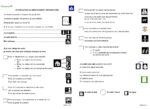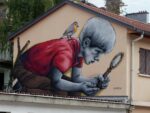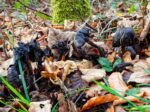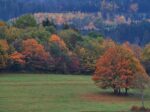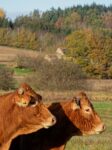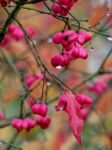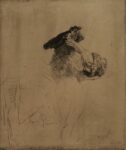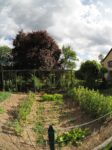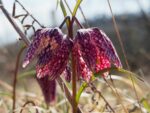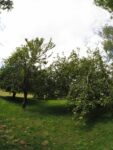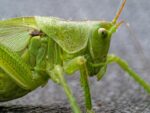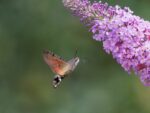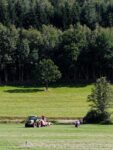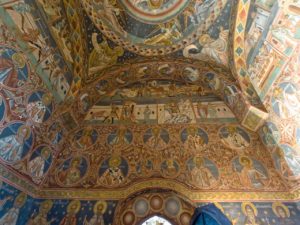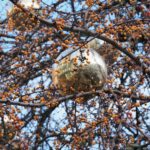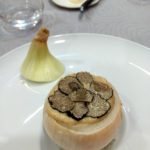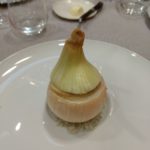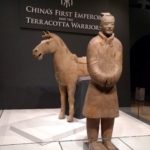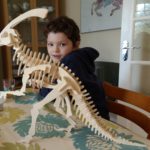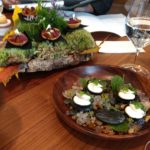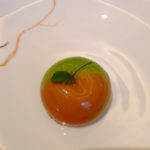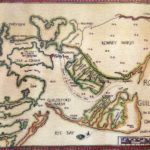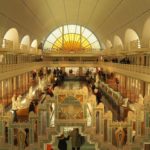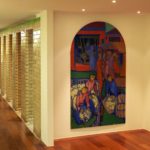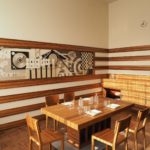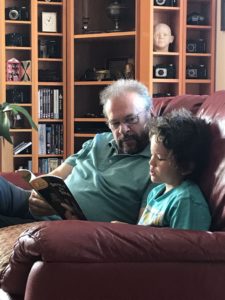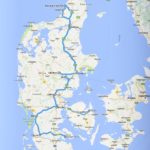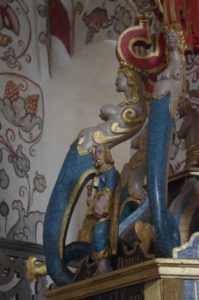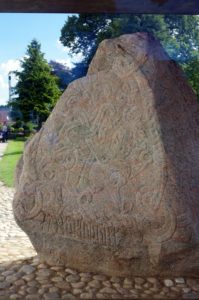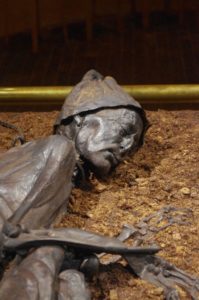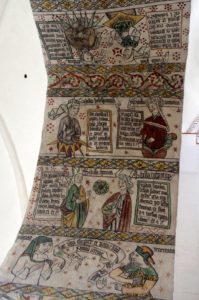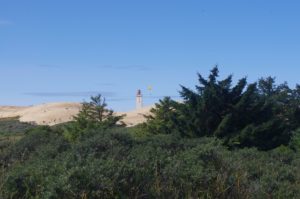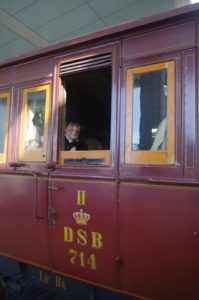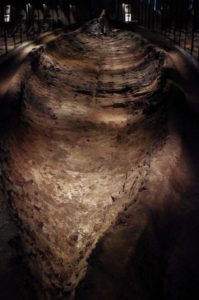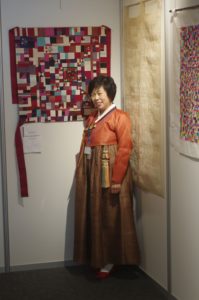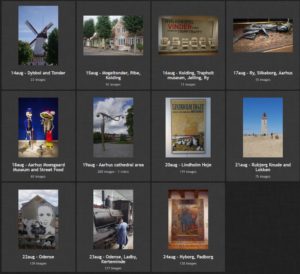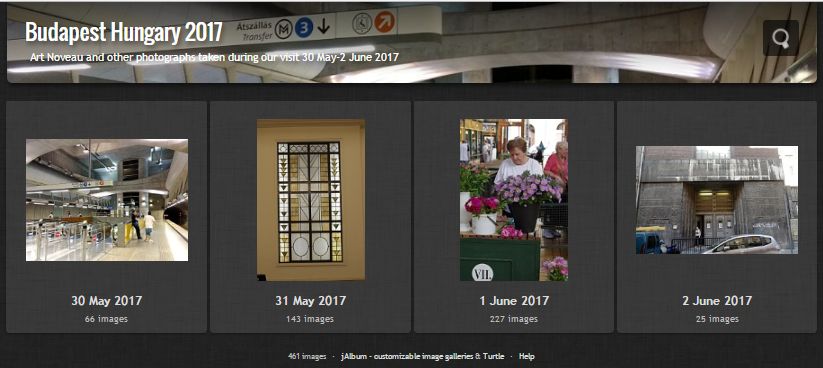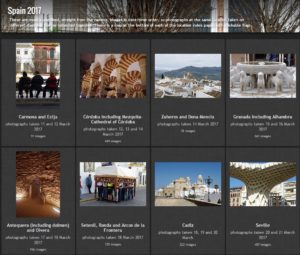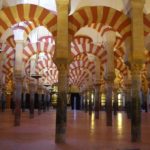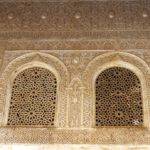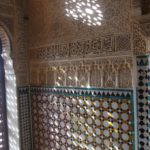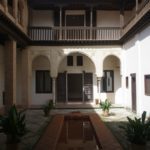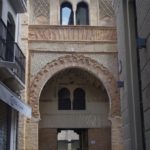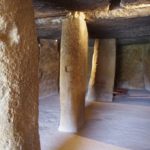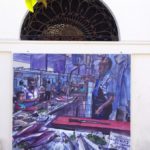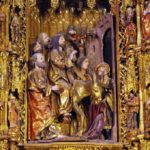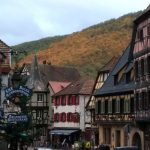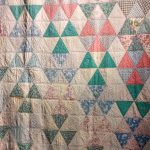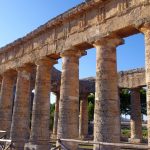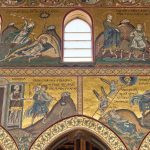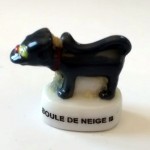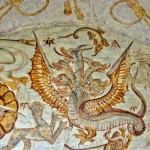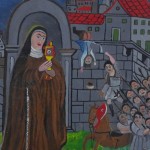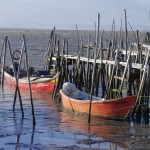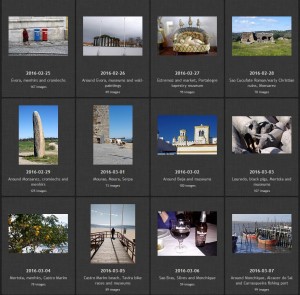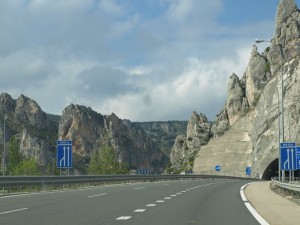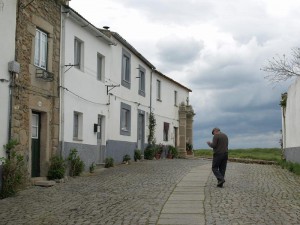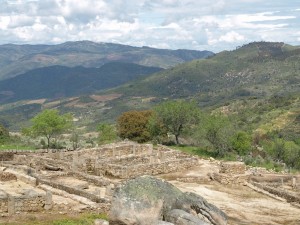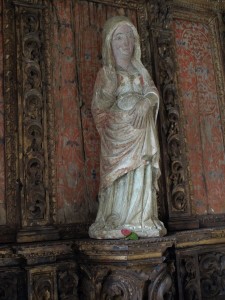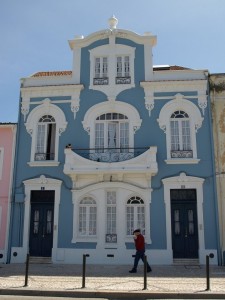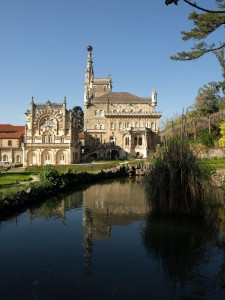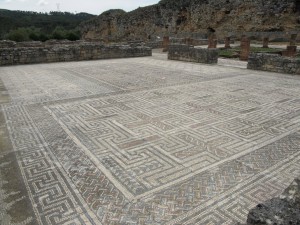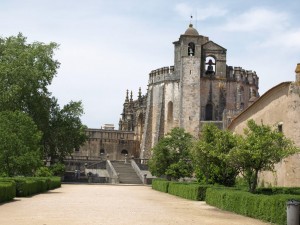To download a printable PDF version (no pictures)
click on this link E2E2020no3.pdf (five A4 pages)
There are some links to photographs in the text;
clicking on the photographs will sometimes lead to
a larger selection of photographs
Today is the twenty-second day of the second confinement in France (which is starting to sound like sounding like a new date system similar to the post-Revolutionary one). As before, it is stricter here than in the UK, with certificates to complete before leaving the house. It felt borderline illicit earlier this week when walking well beyond the daily permitted one kilometre and one hour from our house.
But it was after ticking the box for collecting essential medical supplies rather than the box for exercising and dog-walking, and the nearest pharmacy is in the next village of Saulcy-sur-Meurthe. Since the end of August the road to Saulcy has been closed for internet fibre installation to Mandray and resurfacing works (for some reason the fibre branching to E2E which takes the same route as far as the crossroads is scheduled for 2022/3), and so the walk across the fields and through the woods has been a much shorter route for us than the road deviation.
The original French proposal was for lock-down until 2 December; a review last week confirmed that it would not end before that, and there has been talk of extending it further. The restrictions here are significant. General travel is not allowed and leaving the house is only permitted for a short list of specific activities. As well as the printed version, the French TousAntiCovid phone app allows generation of a certificate with a QR code. Either can be shown when requested. We have seen mobile police checkpoints on the main roads stopping cars.
Only food, tobacco and computer equipment retailers, garages, pharmacies and laundries are allowed to open. DIY and hardware stores can open but only for items not on the restricted list. Electrical/white goods shops are shut, as are hairdressers. Florists and garden centres are shut although they were allowed to stay open until Toussaint, 1 November, for the sale of chrysanthemums (la fleur des morts) to honour the dead. Supermarkets are restricted in what they can sell and have had to fence off or rearrange areas where they usually have flowers, books, white goods, cosmetics etc. Home delivery/click and collect is available for restricted items to support local businesses. Street markets remain open. Hotels can open for “professional” travellers but food is only available in room service.
But a headache for the government here, as in the UK, is what to do about family gatherings at Christmas and New Year, and commerce associations are pushing for re-opening before Black Friday. Amazon France has now said it will postpone Black Friday offers until 4 December after French shops have probably reopened on 1 December (although it will still be possible to use Amazon Germany, Italy, Spain and UK – so two Black Fridays!) President Macron will give a further update next week.
At present the government is limiting cross-border flow. There are two-week self-isolation periods for going into the UK from France and again coming back into France (along with other certificates/Covid-19 testing). So with all the restrictions and uncertainties, we are regretfully preparing to spend our first Christmas in Entre-deux-Eaux for eighteen years.
Of course, in the good old days, we used to rush over here in the Christmas holidays. The first Christmas we spent here in 1990 (after we bought the house at the end of October) was memorable. The electrician had just finished his work, and the plaster was still wet on the walls, but the roofer had given up when the snow started, so had not put flashing round the chimneys. So when we lit the range in the kitchen and turned on the new electric radiators, the heat melted the snow round the chimney and the roof leaked. But we were intrepid in those days. It is hard to remember the days of no mobile phones, and we had not yet got a house phone, so it was a question of marching down to the village phone box and making agitated calls. The fact that we did not yet have a fridge was less of a problem, as we just buried food outside in the snow, although, with hindsight, it is surprising it was not devoured by animals! We all four slept in a dry room downstairs (which later became the dining room), taking care not to fall into the hole in the floorboards we discovered under a sofa which had been left. And we kept warm by and cooked meals including Christmas dinner on the sturdy range in the kitchen.
Thirty years later it should be a more comfortable and warm Christmas here, but it will so sad not to see the family (though perhaps no worse than having to spend our time in isolation in the UK and still being unable to see them). We hope they will be able to get together, with Leila collecting Jacob and taking him down to Toby’s on 18 December.
With Brexit bumbling on, we have had to apply for replacement permanent residence cards with us classified under the withdrawal agreement terms, which allows us more flexibility in travelling in Europe, with no need for additional visas, etc. For us the exchange should be a formality as we have ten-year cards which they will just renew – although we will probably need to go to the Departmental capital in Epinal as the new cards need digital fingerprints in the chip. Like many things, the application has been made and is being processed. Our health cover will continue to be paid by the UK and we will be able to get European Health Insurance Cards (EHIC).
For UK residents it is seems probable that travel in the EU will become more restrictive after 31 December 2020 including 90-in-180 day period limitations, stamped passports, border checks, International Driving Permits, green cards for international car insurance, travel insurance (EHIC for UK citizens has yet to be agreed), stricter pet passport regulations and, from 2022/3 onwards, possibly paying for a European Travel Information and Authorization System (ETIAS) pass.
While Covid restrictions were lifted we enjoyed a few low-key activities in September and October. There may have been great excitement in Nottingham at the discovery of the Banksy graffiti of a girl with a hula-hoop (and a long queue to take selfies in front of it), but we caught up on all the sponsored street art in Saint Dié. After the war Saint Dié turned down proposals for a Le Corbusier designed town centre, to be replace the buildings dynamited by the retreating Germans. Consequently the main street is not very memorable and the blocks of flats, schools and community centres that were built around the centre are solid but not particularly attractive. So the colourful paintings that have been commissioned in recent years have definitely brightened up the featureless buildings.
There are a few that we regularly pass, like the hen and the cat, Un amour impossible, on the walls of the former library (which before that was the bishop’s palace), but many are in the social housing areas we seldom visit. So, armed with a map, descriptions and John’s camera we set out on a couple of sunny days to find all twenty-two.
John had initially been attracted by the boy with a magnifying glass L’observateur perched above some garage roofs close to the market square. Helen’s new favourite was the large fantasy/story-book Le Renard and le corbeau (spot the other animals!) on the end of a block of flats on the heights of Saint-Roch. It took us a long time to find the last, which turned out to be much smaller; Expulsion NDDL hidden in a doorway recess and N° 22(?) on the corner of the main shopping street.
As most restaurants had put scrupulous distancing and masking precautions into effect, we continued to enjoy occasional meals at our favourite restaurants. Having tried out a few new ones and been disappointed in the food, or alarmed by lack of precautions at one, and the throngs of unmasked tourists around another in Colmar, we reverted to our favourites and celebrated John’s birthday with lunch at l’Imprimerie just three days before President Macron announced the second lock-down. We had asked in advance whether it would be possible for chef Morgan to make the delicious chocolate cream-filled lemon we’d once had, – so that day everyone was served a lemon dessert, though not everyone had Joyeux Anniversaire written a little unevenly in chocolate on their plate. The service is fairly informal at l’Imprimerie, with chef enjoying bringing food to his guests now that there is the open cooking fire and preparation area in the middle of the room. However, the Frankenbourg prides itself on correct service and always has some closely supervised trainees. Since we cut down on carbohydrates at home, the occasional bread roll and butter is a real treat when out, but Helen distressed a young male trainee who was meant to be clearing the table of every trace of crumbs after the quail main course as she grabbed the remains of her roll – how could he now be seen to be doing his job correctly?
Entre-deux-Eaux decided not to restart the monthly oldies champagne, cards and chat (presumably because of the large numbers), but the Ste Marguerite pensioners committee decided that they would resume activities at the end of September, with rigorous precautions. So Helen enjoyed three mind-stimulating remue meninges sessions before lockdown. There are usually around twelve people there, but the elegant ninety-year old decided not to risk it, and those shielding sick partners stayed away leaving a core of six, which was very manageable. The room now has a locked gate and door, so other people do not wander in and contaminate it between authorised sessions, our temperature is taken before we enter, and we wear our masks, have our own hand gel, and even wipe down table tops.
The annual International Geography Festival (FIG) was held in Saint Dié at the beginning of October, presumably with stringent precautions. This year the subject was Climate. The weather duly obliged, with a Saturday night of very high winds which, we read in the newspaper, damaged (shock-horror) the catering tent. On Sunday a professor from the Sorbonne was due to pronounce on the weighty topic of whether breakfast was necessary, so perhaps they were forced to conclude it was not, at least that day. The weather had also not propitious for the delayed French Open tennis in Paris, with complaints from the international players about how cold it was. They have long forgotten compulsory games lessons in all weathers at school! One happier person might have been Entre-deux-Eaux’s mayor who at the same time was saying that there wasn’t a problem with Covid in our commune, just with the low water levels in the reservoirs. (Helen had had to go down to the mairie to get a pension form signed and stamped attesting to her continued existence).
You will have read the shocking October news of the beheading of teacher Samuel Paty in Paris and the killings in Nice which have shaken everyone out of their Covid preoccupation. But on a lighter note of French national news, have you read about the autoroute arrest on the A20 leading to Paris of a man driving at a speed of 249 km/h. A new record. His excuse was that he wanted to make sure he was home before the curfew!
Back in the small world of Entre-deux-Eaux, our neighbour Danielle Laine, made her long awaited move to a brand-new purpose-built care home in Plainfaing. When Helen visited her with our next door neighbour (also Danielle), she showed us round enthusiastically, then we had drinks and cake with the warden and the six current residents outside on the terrace. The warden had been an au pair in England, so had plenty to say and the others chipped in apart from the one who had not put in his hearing aids and the wife who had suffered a stroke. Mme Laine was clearly enjoying the constant company (and flirting outrageously with the deaf man) after being so lonely following the death of her husband. Two of the ladies hadn’t settled and wanted to go back to their own homes, so she was trying to talk them out of it as their families have made it clear that they don’t want them to return as they keep falling.
But at the end of October it was back to lock-down (although, more humanely here, visiting relatives in care homes is not forbidden). So it has been back to the small pleasures. John continues to photograph the autumn colours, and the flora and fauna in the nearby fields and woods, though yesterday’s fungi were miserably wilted and black. We had an invasion of hundreds of different coloured and spotted ladybirds. Helen’s pleasure is books, including books about books like the new Burning the Books and the fascinating novel Book woman of Troublesome Creek about a nineteen-year old pack horse (or mule in her case) librarian in an impoverished mountain area of Kentucky who is also one of the few blue-skinned people, who faced a lot of prejudice at that time. In the evenings we seem to have watched a lot of football and crime (including one series, Beyond appearances or Au-dela des apparences, set around the Col de la Schlucht near here).
And of course there are those one kilometre radius walks, mainly to the north of the house, where we have seen a lot of evidence of boars digging up strips of field by night. A few days ago, on Armistice Day, we did our best to walk to the south for a change, crossing fields and streams (one bridge has collapsed), avoiding the hefty tan coloured cattle (definitely not cows) who emit fearsome bellows from time to time and line up by the flimsy looking wire barriers to watch our passage with lugubrious interest. Unfortunately there were more cattle in another field we had hoped to cross, so we took a road detour towards a different track. At this point one of the village hunts shifted their focus and cars to the woods just in front of us. Armistice Day is a public holiday here, and the Vosges department had just obtained a derogation from the Covid restrictions to allow hunting boar and deer in cases of damage to forests and agriculture. We soon heard shots, so, as one can never be too sure of their aim in the afternoon after a boozy lunch, we prudently retreated from our detour, only to hear the shouts and barking dogs of a rival hunt in the other direction (around the World War 1 military cemetery). So we gave up and walked back past the watching cattle to the safer activity of gardening. You might have thought that shooting would be considered inappropriate on Armistice Day. The nocturnal boar diggings continue.
Alistair has just sent some photos of the Christmas lights he is putting up outside to cheer up their neighbours. That’s something else we will miss this Christmas as all our lights and decorations have drifted to Letchworth over the years (and their sale is currently on the prohibited list here). And the flamboyant crimson spindle fruits are now fading on their branches. However we do have a good collection of candles here, which usually only get lit during power cuts. So it will have to be traditional greenery, berries and candles here! And maybe the amaryllis and hyacinths we planted earlier will bloom for Christmas.

